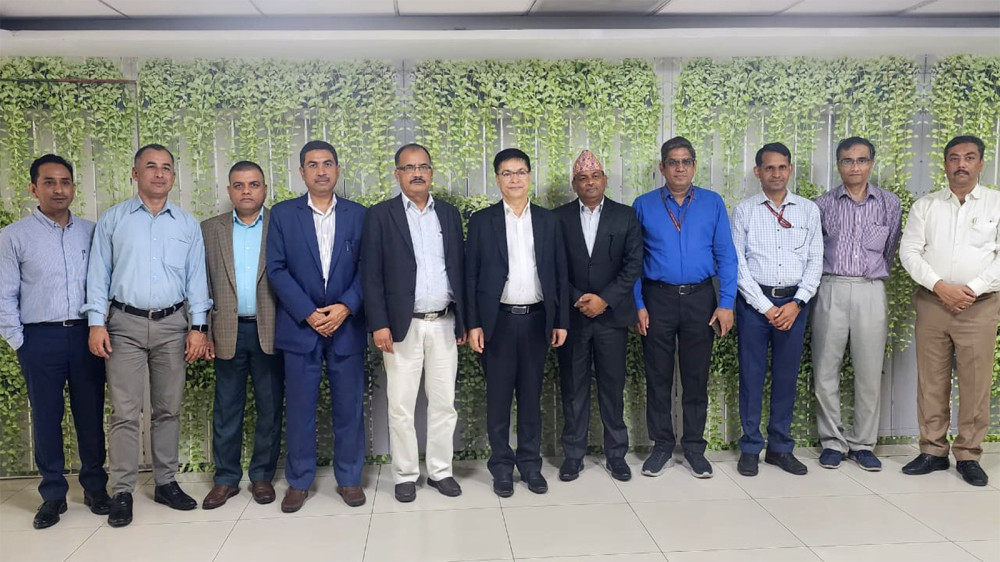Nepal gains approval to expand electricity trade with multiple Indian states

KATHMANDU: Nepal has received the green light to engage in electricity trade with several Indian states. During a meeting of the Nepal-India Joint Technical Team (JTT) held in New Delhi, the capital of India, it was decided that electricity trading could occur at the state level through a 132 kV transmission line.
This decision was made at the 14th meeting of the Nepal-India joint technical team, effectively opening the door for electricity import and export between the two nations via the 132 kV transmission line.
Prior to this meeting, the Joint Operation Committee held discussions between the Nepal Electricity Authority and India’s Central Electricity Authority, reaching an agreement that permits Indian organizations to utilize the cross-border 132 kV line for both importing and exporting electricity.
This development marks a significant shift from central-level trade to state-level import and export operations within India. However, it is contingent on approval from the energy joint working group and a meeting at the energy secretary level, according to Prabal Adhikari, the director of the electricity trade department under the Nepal Electricity Authority.
Subsequently, the electricity trading organizations of Nepal and India will need to come to a mutual agreement and submit their proposal to the Central Electricity Authority of India for final authorization.
In addition to these changes, the meeting also sanctioned the import and export of electricity via the 132 kV transmission line, extending from Mainhia in Rupandehi, Nepal, to Nautanuwa in India, set to commence operations within the next month.
The Nepal Electricity Authority anticipates that approximately 450 megawatts of electricity can be imported and exported through this Nepal-India 132 kV transmission line.
Furthermore, plans are in place to commission the Kohalpur-Nanpara 132 kV transmission line during the current fiscal year, which will also facilitate import and export operations. In the past, electricity trading was primarily conducted at the central level through the Dhalkebar-Muzaffarpur transmission line. However, the 14th JTT meeting has outlined intentions to enhance various other transmission lines connecting Nepal and India. The Dhalkebar-Muzaffarpur 400 kV transmission line’s capacity will be assessed and upgraded to allow for the export of up to 800 MW of electricity within the next 5 to 6 months, significantly increasing its current 600 MW capacity.
This decision comes after recommendations made during the previous JTT meeting in February, leading to discussions at the secretary level to expand the Dhalkebar-Muzaffarpur 400 kV transmission line’s capacity to 800 MW for import and export purposes. Despite its high capacity, the transmission line has only been operating at half capacity due to the “N minus one” approach, which uses an alternative line in the event of issues with the primary transmission line. Nevertheless, the Nepal Electricity Authority has been paying an annual fee of approximately 1 billion to India for the use of the Dhalkewar-Muzaffarpur transmission line.
Additionally, the meeting has earmarked more than 900 MW of capacity in the transmission line constructed as part of the Arun Third Project. While the transmission line on the Nepal side awaits resolution of land acquisition issues, the line towards India is ready for operation.
The spokesperson for the Investment Board, Amrit Lamsal, reported, “The progress on the Arun 3rd production is satisfactory, but there are challenges in the transmission line work, particularly related to land acquisition in some districts.” SJVN, a joint venture company of the Government of India and the Government of Himachal Pradesh, aims to commence commercial production from the Arun III project by 2025.
Joint Secretary Dev, who led the Nepalese team during the meeting, also revealed plans to investigate the possibility of increasing the capacity of the Tanakpur transmission line to export more electricity. The expansion of the transmission line aims to facilitate the exchange of electricity generated in Sudurpaschim Province for export to India from Tanakpur.
Presently, around 70 megawatts of electricity are exported via this transmission line, and discussions have paved the way for capacity expansion to enable greater electricity exchange. A joint visit by technical teams from Nepal and India is scheduled to assess the feasibility of constructing a 220 kV line in the Tanakpur-Mahendranagar corridor.












Facebook Comment